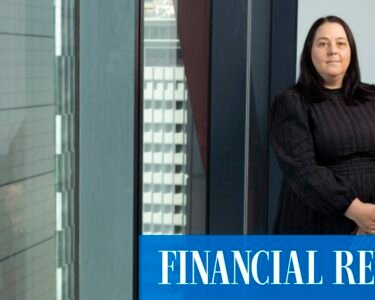According to Kuldeep Yadav, head of Australia & New Zealand ESG & climate research at MSCI, the flexibility and longer investment horizons inherent in private capital mean that investors are now committing to sizeable renewable infrastructure projects.
Large-scale wind farms and solar arrays are offering stable long-term returns through private market investment.
“Public market climate funds are more concentrated in tech and consumer discretionary sectors, such as electric vehicles,” Yadav says. “In contrast, private climate funds have greater exposure to utilities and renewable infrastructure assets, which provide more stable, long-term growth.”

Kuldeep Yadav, head of Australia & New Zealand ESG & climate research at MSCI.
He says a key factor in Australia’s energy transition is the government’s target of 82 per cent renewable energy capacity by 2030, leading to substantial private capital inflows into wind, solar, and battery storage.
“By their nature, infrastructure projects are better suited to private investments, which can accommodate their longer development cycles,” he adds.
MSCI’s Sustainability and Climate Trends to Watch for 2025 report highlights a stark contrast: while public low-carbon solutions were valued at a staggering $US4.4 trillion – nearly 23 times the size of private investments at $US189 billion – the private market has seen rapid growth in 2024.
The five-year compound annual growth rate in the private market was 17 per cent, the report states, while for the public set it was a more modest 11.9 per cent.
Yadav says that one major difference between public and private market climate funds is in how performance is measured.
“Private markets handle performance calculations differently because they deal with illiquid assets. Unlike publicly traded stocks, these assets aren’t frequently traded, which leads to a smoothing effect in performance calculations,” he says. “Public markets react more to short-term market fluctuations, whereas private markets focus on long-term asset value.”
Overall, he adds, climate-focused private investments have outperformed public markets because of their strong focus on utilities and renewable energy assets.
Systemic challenges in public markets are also reshaping institutional investor portfolios, particularly in climate-focused funds.
“If you look at Australia’s top 200 publicly listed companies, you’ll notice that only three major utility companies exist,” he says. “This limited availability makes it difficult for investors to gain exposure to transitioning energy companies in public markets.
“This gap between public markets and the real economy is a major reason why institutional investors are increasingly looking toward private markets.
“Many follow a total portfolio approach, where they invest in real assets that drive economic transformation rather than just financial market movements.”
As investors grapple with limited renewable energy options in public markets, many are reassessing how best to manage climate-related risks – not just in Australia, but globally.
Institutional investors are also reconsidering traditional approaches to managing climate-related risks and opportunities, readjusting their strategies to accommodate a shifting market.
While private investments in renewable infrastructure are accelerating, there is a growing recognition that simply divesting from high-emission assets may not be the best solution, particularly in rapidly expanding economies.
Policymakers and financial regulators in the Asia Pacific region are prioritising disclosure and engagement over divestment.
Rather than pulling capital out of carbon-intensive sectors, they aim to steer companies toward adaptation and transition strategies through enhanced sustainability reporting and transition planning.
“Adapting to these shifts while integrating robust sustainability strategies will be critical for mitigating compliance risks and seizing emerging opportunities in the sustainability landscape,” says Meggin Thwing Eastman, MSCI’s global head of sustainable finance research, who identifies 2025 as a pivotal year for regulatory shifts in the region.

Meggin Thwing Eastman, MSCI’s global head of sustainable finance research.
This shift in climate finance strategy is also reflected in how large institutional investors are approaching responsible investment.
Leilani Weier, general manager, responsible investment & sustainability at Rest, emphasises the role of active ownership in allowing for greater investor control and in driving economic decarbonisation.
“Private market investors can take a more active interest in the specific portfolio
company or projects invested in,” Weier says. “This could be through strategic direction or operational improvement with the outcome of value creation for the ultimate owner, which in our case is the Rest member.

Leilani Weier, general manager, responsible investment & sustainability at Rest.
“Private companies can offer investors a level of control they normally don’t have in listed markets, for example, appointed board representation or a controlling stake, which can help the company or project achieve their goals,” she says.
Ultimately, while public markets may have laid the groundwork for renewable energy investments, private markets are rapidly advancing, driven by strategic focus, flexibility, and an increasing commitment to sustainable development.
For Yadav, meanwhile, this evolution is part of a wholesale economic transition which investors ignore at their peril.
“The biggest theme we’re seeing in sustainable finance is the sheer momentum behind energy transition,” he says. “It’s not just about climate mitigation any more – it’s an economic transformation.”
To find out more, and to read the Sustainability and Climate Trends to Watch for 2025 report, please visit MSCI.




